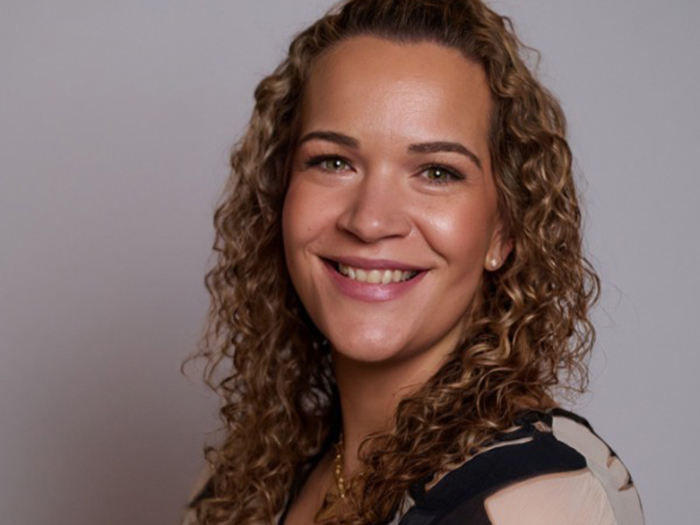The Broker’s Edge: Exploring AI and Machine Learning Tools for High-Volume, Low-Premium Accounts

As she wandered through the aisles in the expo hall at last year’s InsureTech Connect, Jeanette Hernandez, SVP of global insurance services at Clearspeed, noticed something she hadn’t seen at the conference before: There were more broker-oriented tools and digital services available.
Startups were pitching tools that streamlined brokerage operations and improved customer service. They pitched data analytic systems that could help a broker grow their business and develop their expertise.
“There was more broker-facing technology emerging into the market than I’ve ever seen,” Hernandez said.
Startups and entrepreneurs of all sorts were pitching tools to help organize submission data and streamline customer service. The insurance industry has long been courted by AI and machine learning technologies, but much of that attention has been directed toward carriers, which can use technology to improve their underwriting performance.
Rarely did tech startups pitch brokers.
That’s starting to change as brokers realize the potential of AI and machine learning algorithms to automate their workflows and grow their books of business.
Of particular note are the ways in which brokers are using this tech to generate submissions, secure coverage and service small and middle market business accounts, whose high volume and low premiums can quickly become a drain on brokers’ time.
“There is a renewed excitement about AI,” said Leandro DalleMule, global head of insurance and general manager at Planck.
Automating Manual Processes
One of the primary advantages brokers see in AI and machine learning is automating manual processes commonly seen in small and middle market business accounts.
Small businesses might need more certificates of insurance, especially if they’re in industries like trucking or fleet management, to prove to clients they have the needed policies. It takes brokers time to pull this information.
Added to that, small and middle market business owners may not have a lot of knowledge about the insurance process, so they constantly have questions.
“Mid-market, and small commercial policies in particular, are one of the hardest problems to solve right now. The premiums are not necessarily massive, so distribution agents and brokers are not making a ton of revenue off of them, but they’re highly labor-intensive, not just to quote but to service post-sale as well,” said Margeaux Giles, founder and chief executive officer of Irys.
Digital systems are helping automate these processes and make quick coverage recommendations. Businesses fill out a brief questionnaire and then the broker knows what their insurance needs are.
If they have employees, they need to look for a workers’ comp policy. If they accept credit cards, a cyber policy.
“We use technology to cater to underserved, lower premium transactions and create a good experience for small businesses and individuals,” said David Embry, founder and CEO of Mylo. “We want to ask as few questions as possible, to make a recommendation first in terms of what coverage somebody needs.”
Policyholders appreciate these tools because they help streamline the insurance buying process. Brokers appreciate them because they make it easier to meet the needs of high-volume, low-premium accounts. The tech extends beyond the initial marketing and submission process. Brokers can also use AI to help make policy language easier to understand for small business owners.
“AI is really good for brokers to go, ‘Hey, take this 700-page document and summarize it for me so that I can decode it and the client can understand it,’” Giles said.
These tools can also help brokers meet their customers where they are. Insureds can apply for and receive insurance entirely online, or they can pick up the phone and speak with their broker. The flexibility of these digital tools is appealing to business owners of all ages.
A Gen Z or millennial with a small cupcake shop might want to do everything online, whereas their Gen X and baby boomer counterparts may want more traditional, in-person communication opportunities.
“We can deliver it online, we can deliver it to an agent, because the recommendation is the recommendation,” Embry said.
Identifying New Business Opportunities
Once brokers have optimized customer service and submission marketing operations, they’ll want to start using technology to help them grow their books and build a more profitable business. AI and machine learning algorithms can analyze policy data and help identify new business opportunities.
Brokers have long identified a niche and built their business there. When she was on the agency side, Giles built an expertise insuring telecommunication companies that ran cable underground. AI can help brokers analyze data and identify these kinds of opportunities.
“There’s been rumblings of agents having enough data and using machine learning and AI to be able to create or to almost go to market themselves with really new and interesting insurance products carriers might not have insight into,” Giles said.
Additionally, machine learning algorithms can help brokers assess a carrier’s appetite for a given risk, allowing them to better identify which partners might be a good match for a particular client. “That is another thing that we use technology to automate,” Embry said. “We understand what their appetite is.”
For businesses that are just starting out, a broker’s ability to use data and newer underwriting models to argue with carriers for coverage is a boon. In the past, underwriters may have turned away businesses that are just starting out because of a lack of claims history. That’s not the case now that brokers can use predictive modeling to advocate for their clients.
“Some carriers say, ‘No, I don’t insure anything with less than three years in business,’” DalleMule said. “Now, you can predict what that business is going to look like with much less data and within a shortened time frame.”
At the end of the day, “the tool allows them to write a better, more profitable book,” Hernandez said. That’s incredibly valuable to brokers who are just starting out in the industry. “I think in the next five years, technology will become really important on the onboarding side for a broker or producer,” she continued.
The Next Challenge: Integrating These Tech Tools
Though AI, machine learning algorithms and other technologies show promise, some worry that agencies will be slow to implement them. After all, “we’re the last great industry to embrace technology,” Giles pointed out.
She’s also considered that brokerages may not implement these tools correctly. If they’re too eager to purchase new tech, they might rush to implement it without making sure staff receive proper training. Training employees to use these tech stacks will be crucial to their success.
“How does a broker or an agent actually integrate those tools into their existing processes? You can buy the shiny tool, but then how do you deploy it? How do you implement it correctly?” Giles said.
Still, these tools have potential to help brokers streamline the process of selling insurance to small, middle market and newer businesses. And they can help strengthen broker-carrier partnerships to boot. For young brokers, these tools are the future of breaking into the business and building a book, which translates into building a long-term, sustainable career in the industry.
“We make that coverage recommendation, understanding what carriers are interested in and the differences between their policies. We make sure you have the right coverage,” Embry said. &













